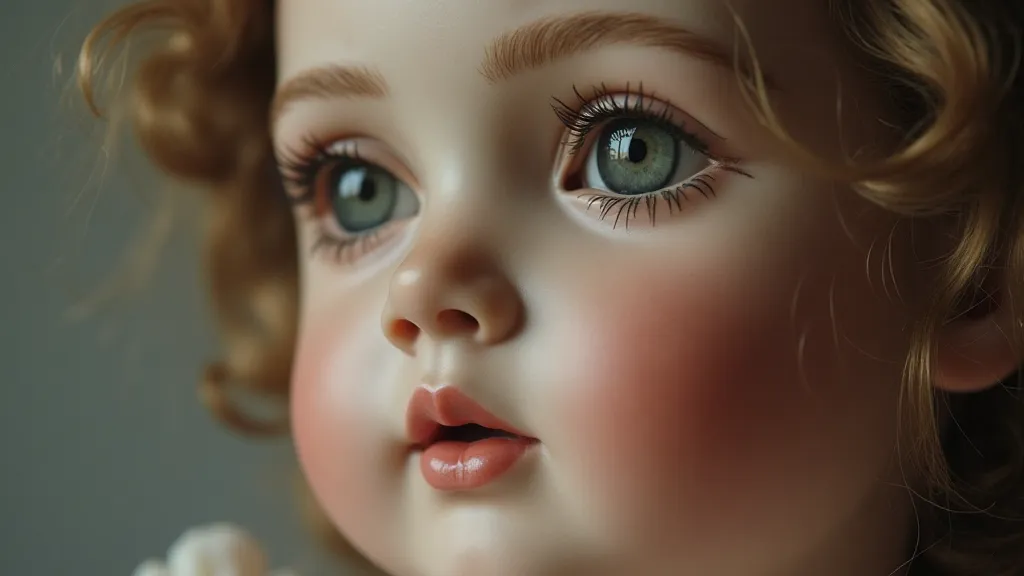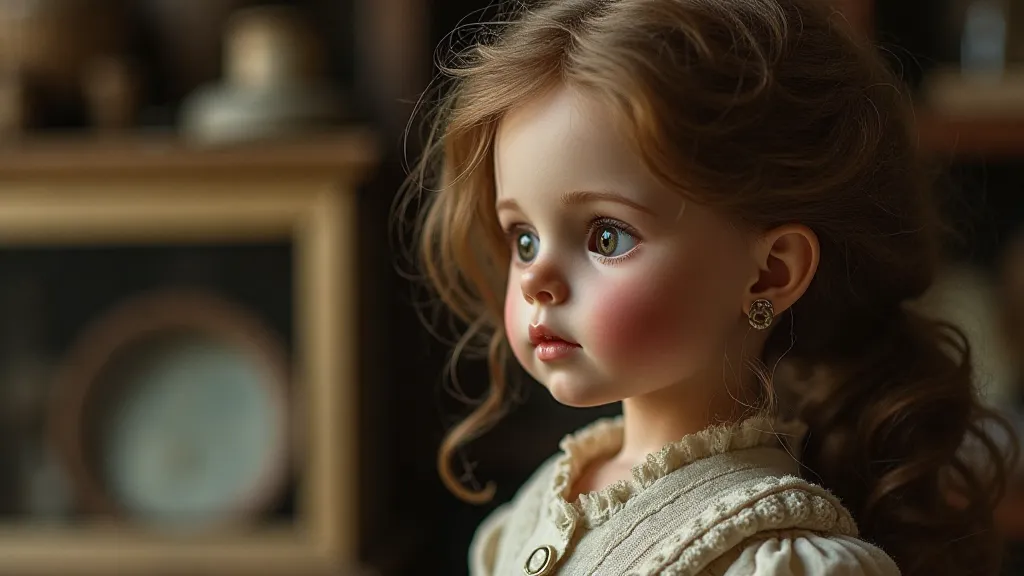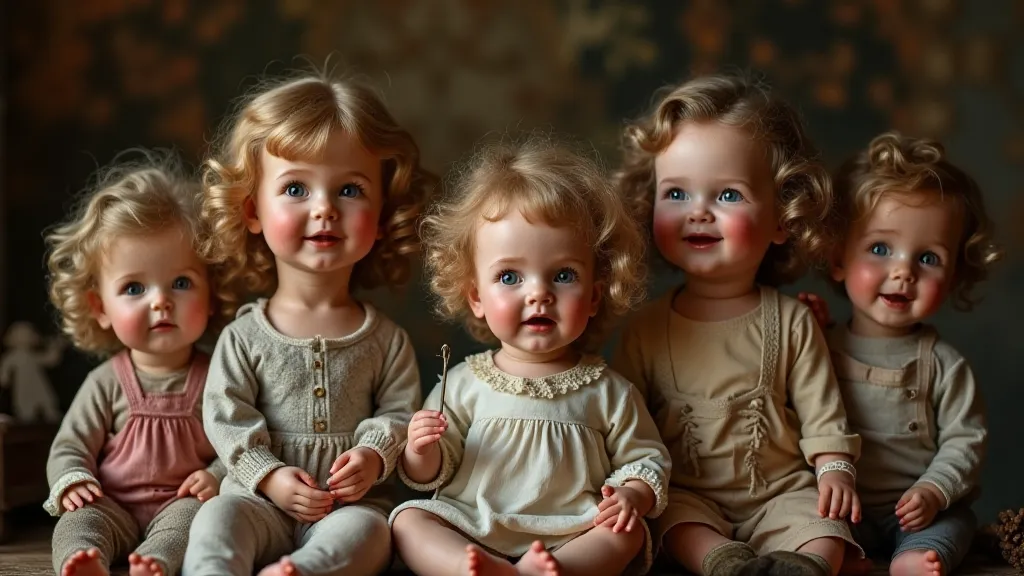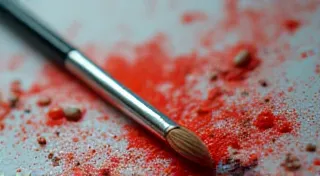The Language of the Eyes: How Antique Doll Expressions Conveyed Personality
There’s something undeniably captivating about an antique doll. It's not merely the history etched into its porcelain skin or the faded elegance of its clothing. It’s the gaze. That singular, frozen moment of expression, meticulously crafted by artisans long gone, that seems to peer straight into your soul. Collecting antique dolls isn’t just about amassing possessions; it’s about connecting with a past where these inanimate objects were imbued with personality, hopes, and dreams – and all conveyed through the subtle language of the eyes.
My own fascination began with a Kestner doll, a "Rosenthal Girl" as she was affectionately known. She wasn't perfect. A crack spider-webbed across her cheek, her paint was faded, and one arm was loose. Yet, she held me captive. That wide-eyed, slightly melancholy expression resonated with a quiet dignity that transcended her imperfections. It wasn't a boisterous joy, nor a theatrical sadness. It was something more complex, a suggestion of untold stories, a whispered understanding of the world.
Early Dolls: A Reflection of Fashion and Idealism
The history of antique dolls is intricately tied to societal norms and artistic trends. Early dolls, particularly in the 18th and early 19th centuries, often mirrored the fashionable styles and idealized beauty of the day. Think of the French Bébé dolls, with their full, round faces and painted-on expressions of sweetness and innocence. These dolls weren't designed for rough-and-tumble play. They were intended to be companions, embodiments of refinement and grace. Their expressions were gentle, often accompanied by softly rounded features and delicately painted lips suggesting a shy, pleasing demeanor.
Doll making in these periods wasn't mass production. Each face was essentially hand-sculpted, ensuring a degree of individuality. While patterns existed to guide the artisans, subtle variations in the sculpting and painting resulted in a spectrum of expressions, even within a single “model.” The choice of eyebrow arch, the slight tilt of the head, the careful placement of eyelashes – all contributed to the perceived personality. Early dolls were luxury items, reflective of the prosperity of their owners. Their expressions were, in a way, a reflection of the aspirations of a rising middle class striving for social standing.

The Rise of the “Character” Doll: Defining Personality Through Expression
The mid-19th century saw a shift. The Industrial Revolution brought about changes in toy production, and with it, a desire for dolls that were more than just elegant reflections of their owners. Character dolls emerged – dolls designed with specific personalities in mind. These weren’t simply representations of beauty; they were intended to embody traits like courage, intelligence, or kindness. The eyes became paramount in conveying these nuances.
German manufacturers, particularly Kestner, Jumeau, and Bru, became masters of this art. They developed complex molds and painting techniques that allowed for a wider range of expressions. Observe, for example, the difference between a Kestner “Little Charlie” with his mischievous, slightly impish grin, and a Jumeau “Debutante” with her reserved, almost regal gaze. Each face was a study in carefully considered details. The placement of the eyebrows became more expressive, used to convey surprise, sadness, or even slyness. Lip shapes changed – a slightly downturned mouth could suggest melancholy, while a broader smile indicated cheerfulness. And the eyes, oh, the eyes! They became the focal point, the window to the doll’s soul.
Understanding these conventions is crucial for any serious antique doll collector. It’s not enough to simply recognize a doll’s maker or age. You need to be able to read its face, to understand the message it’s conveying.
The Influence of Romanticism and Realism
The Romantic movement’s emphasis on emotion and the rise of Realism in art also profoundly influenced doll expressions. Doll makers sought to capture the full spectrum of human emotion, moving beyond the saccharine sweetness of earlier dolls. A hint of vulnerability in the eyes, a subtle furrow of the brow – these details began to appear, adding depth and complexity to the dolls’ perceived personalities. This movement towards realism created a more enduring connection with the dolls, as they felt less like static objects and more like real, albeit miniature, companions.
Consider the Bru dolls of the late 19th century. Their faces, often sculpted with a touch of melancholy or introspection, reflect the prevailing mood of the era – a time of rapid change and increasing social consciousness. It’s this nuance, this ability to convey complex emotions, that makes these dolls so captivating.

Restoration and the Preservation of Expression
Restoring antique dolls is a delicate art. While cleaning and repairing damage is essential, it’s crucial to preserve the original expression. Overpainting or altering the eyes can completely change the doll’s character, diminishing its value and historical significance. Many restorers specialize in facial restoration, carefully recreating lost paint or repairing cracks while striving to maintain the doll's original character. A truly skilled restorer will prioritize preservation over perfection, understanding that the doll’s imperfections are often as much a part of its story as its beauty.
Similarly, when collecting, be wary of dolls with heavily retouched faces. While restoration is sometimes necessary, excessive alteration can mask underlying damage or, worse, be a deliberate attempt to deceive. Learn to recognize the signs of authentic restoration versus overpainting, and always ask detailed questions about a doll’s history and any prior repairs.
The Enduring Allure
The language of the eyes in antique dolls is a testament to the skill and artistry of the artisans who created them. These dolls aren’t merely toys; they are windows into a bygone era, offering glimpses into the values, aspirations, and aesthetics of the people who made and cherished them. Whether you’re a seasoned collector or a curious newcomer, take a moment to truly *look* at an antique doll's face. Observe the subtle details, consider the context of its creation, and allow yourself to be captivated by the story it has to tell. It’s a language that speaks across generations, a silent conversation between the past and the present, all conveyed through the remarkable power of a painted gaze.






